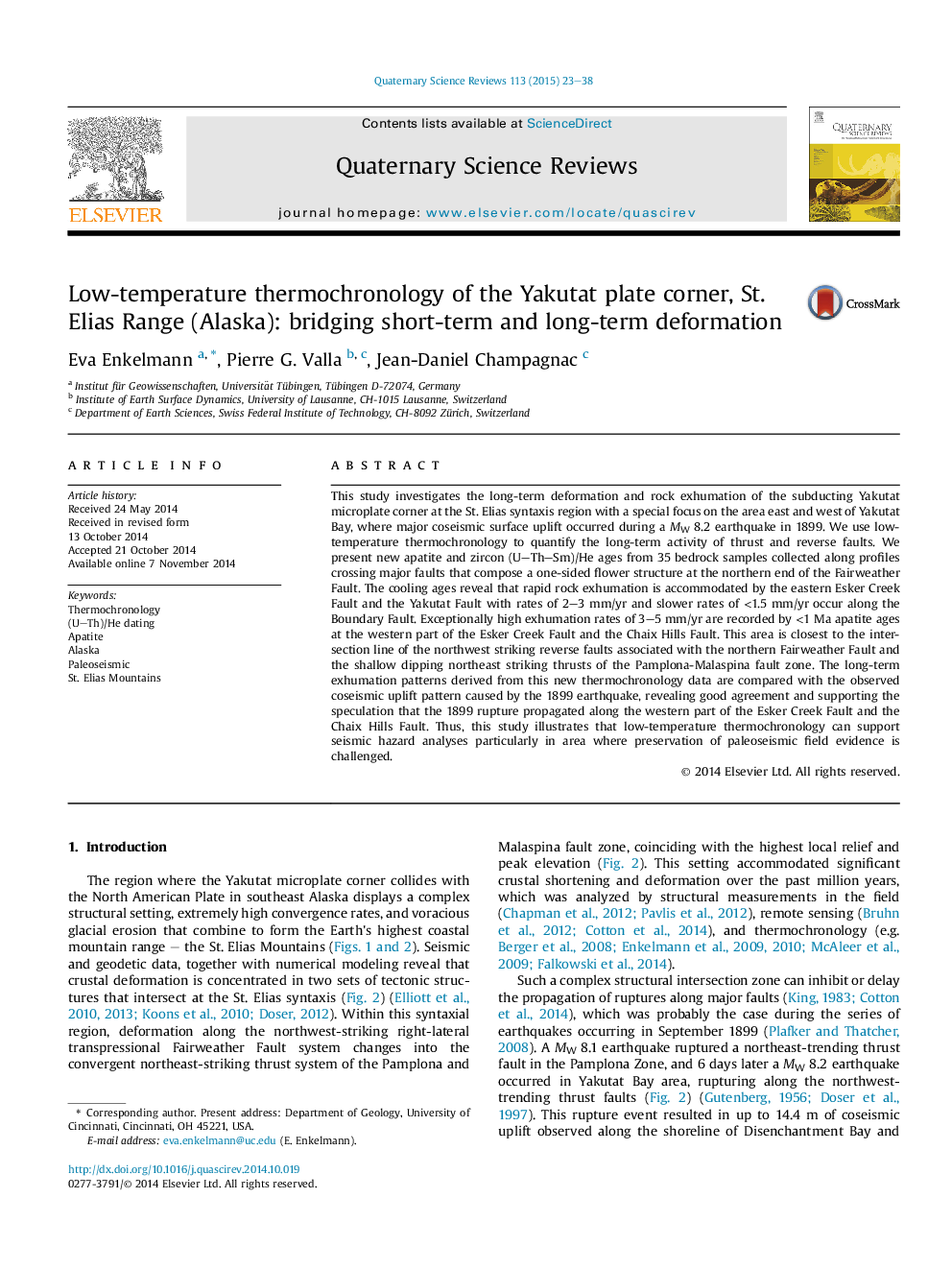| Article ID | Journal | Published Year | Pages | File Type |
|---|---|---|---|---|
| 6445610 | Quaternary Science Reviews | 2015 | 16 Pages |
Abstract
This study investigates the long-term deformation and rock exhumation of the subducting Yakutat microplate corner at the St. Elias syntaxis region with a special focus on the area east and west of Yakutat Bay, where major coseismic surface uplift occurred during a MW 8.2 earthquake in 1899. We use low-temperature thermochronology to quantify the long-term activity of thrust and reverse faults. We present new apatite and zircon (U-Th-Sm)/He ages from 35 bedrock samples collected along profiles crossing major faults that compose a one-sided flower structure at the northern end of the Fairweather Fault. The cooling ages reveal that rapid rock exhumation is accommodated by the eastern Esker Creek Fault and the Yakutat Fault with rates of 2-3Â mm/yr and slower rates of <1.5Â mm/yr occur along the Boundary Fault. Exceptionally high exhumation rates of 3-5Â mm/yr are recorded by <1Â Ma apatite ages at the western part of the Esker Creek Fault and the Chaix Hills Fault. This area is closest to the intersection line of the northwest striking reverse faults associated with the northern Fairweather Fault and the shallow dipping northeast striking thrusts of the Pamplona-Malaspina fault zone. The long-term exhumation patterns derived from this new thermochronology data are compared with the observed coseismic uplift pattern caused by the 1899 earthquake, revealing good agreement and supporting the speculation that the 1899 rupture propagated along the western part of the Esker Creek Fault and the Chaix Hills Fault. Thus, this study illustrates that low-temperature thermochronology can support seismic hazard analyses particularly in area where preservation of paleoseismic field evidence is challenged.
Related Topics
Physical Sciences and Engineering
Earth and Planetary Sciences
Geology
Authors
Eva Enkelmann, Pierre G. Valla, Jean-Daniel Champagnac,
